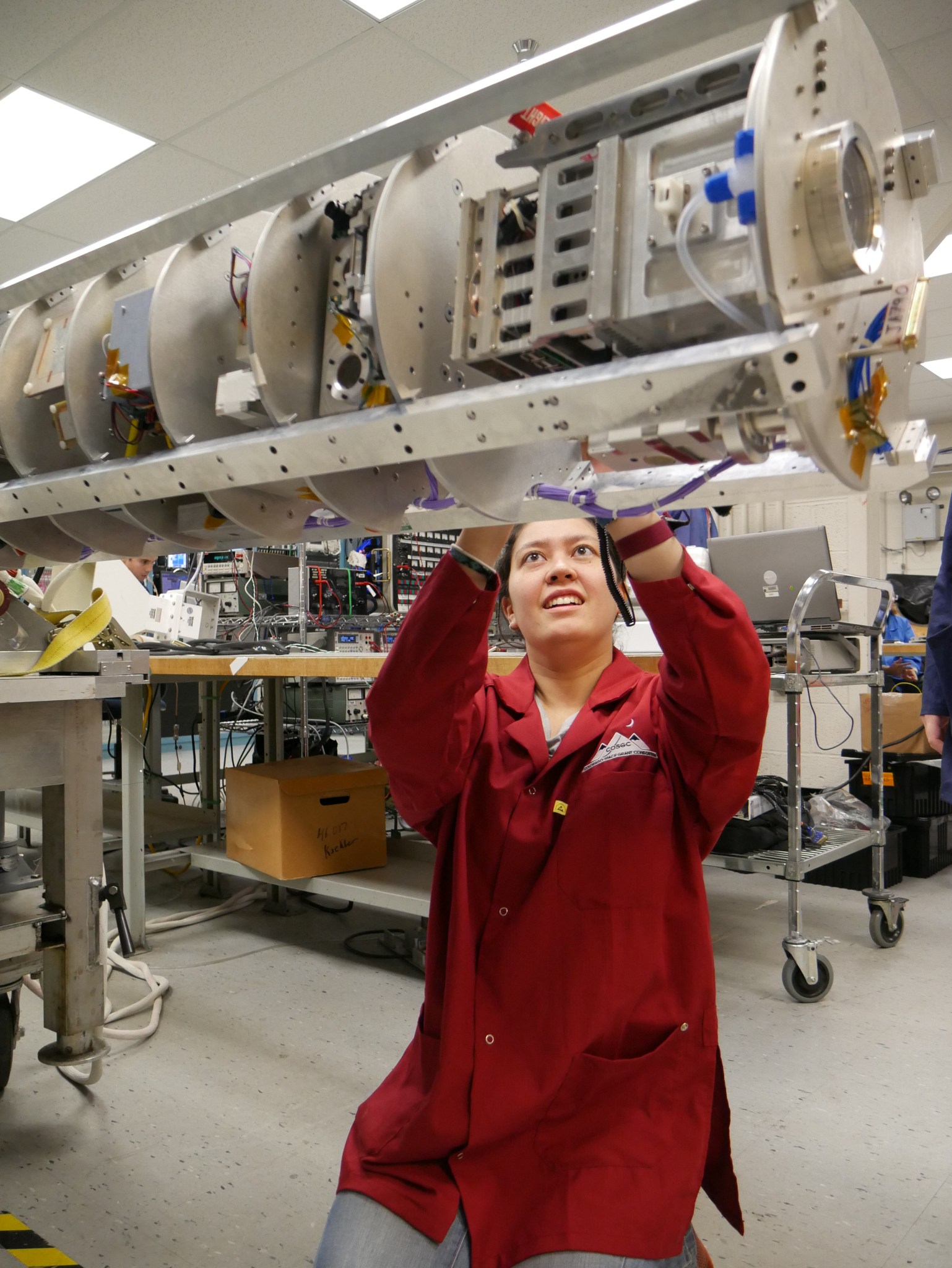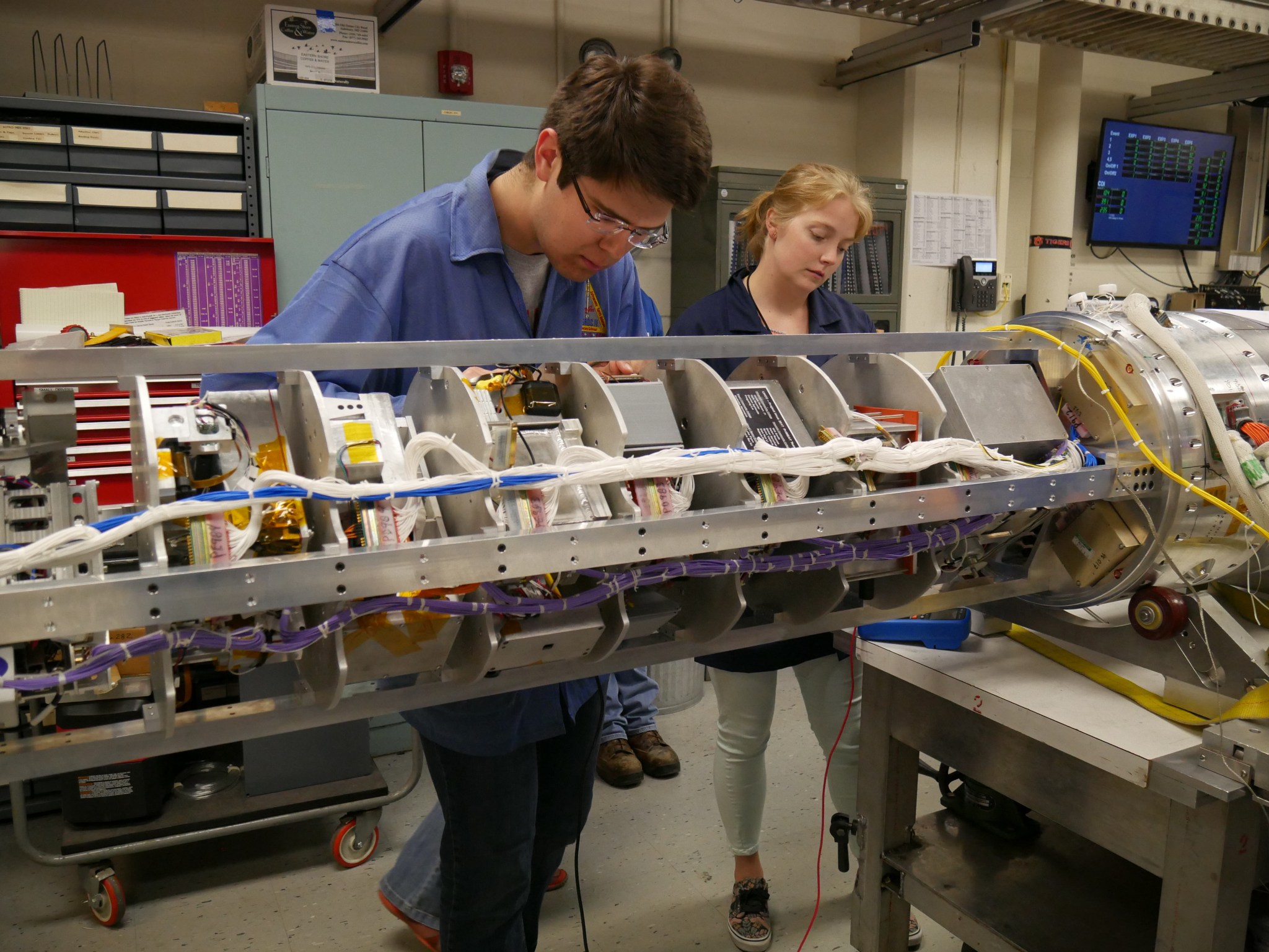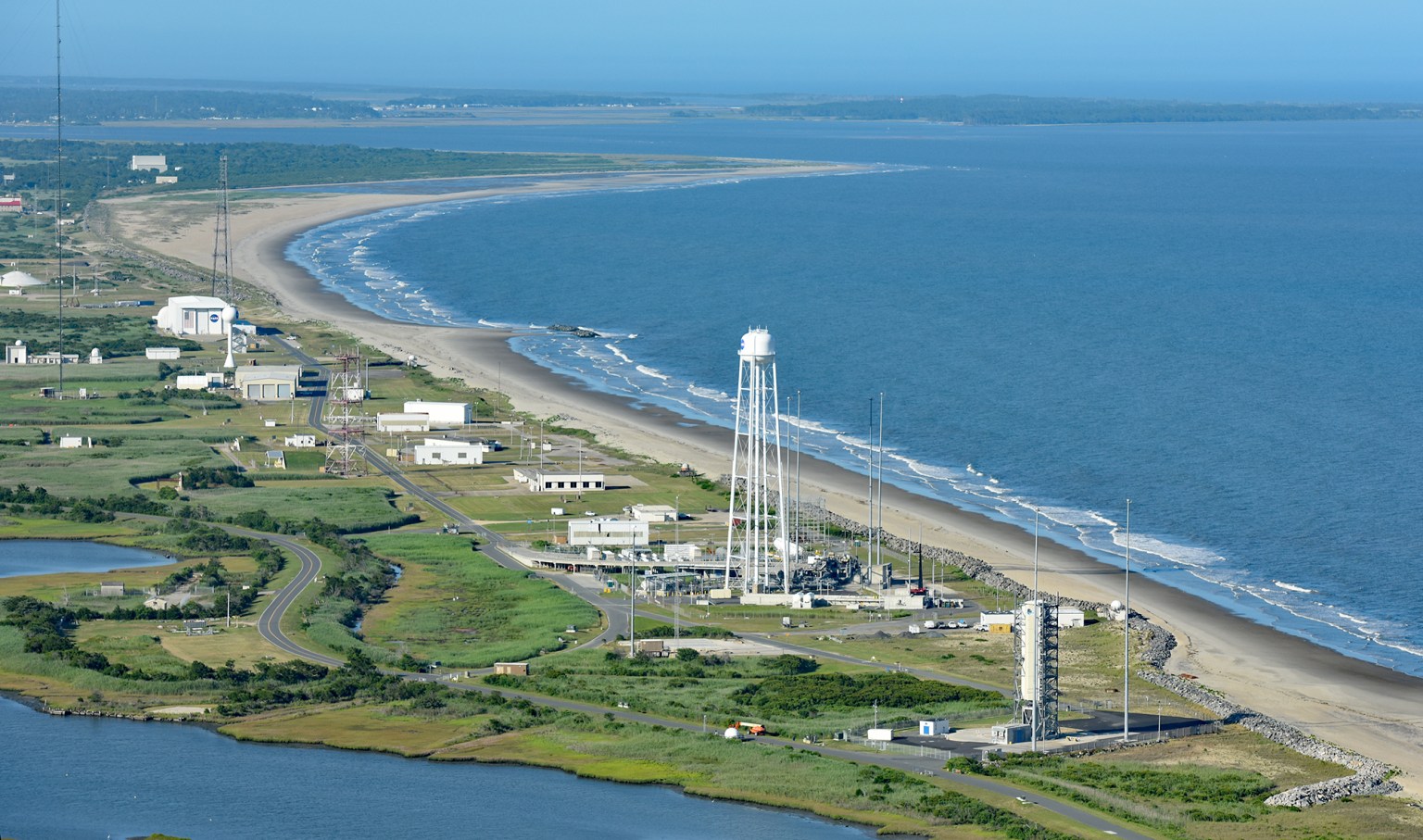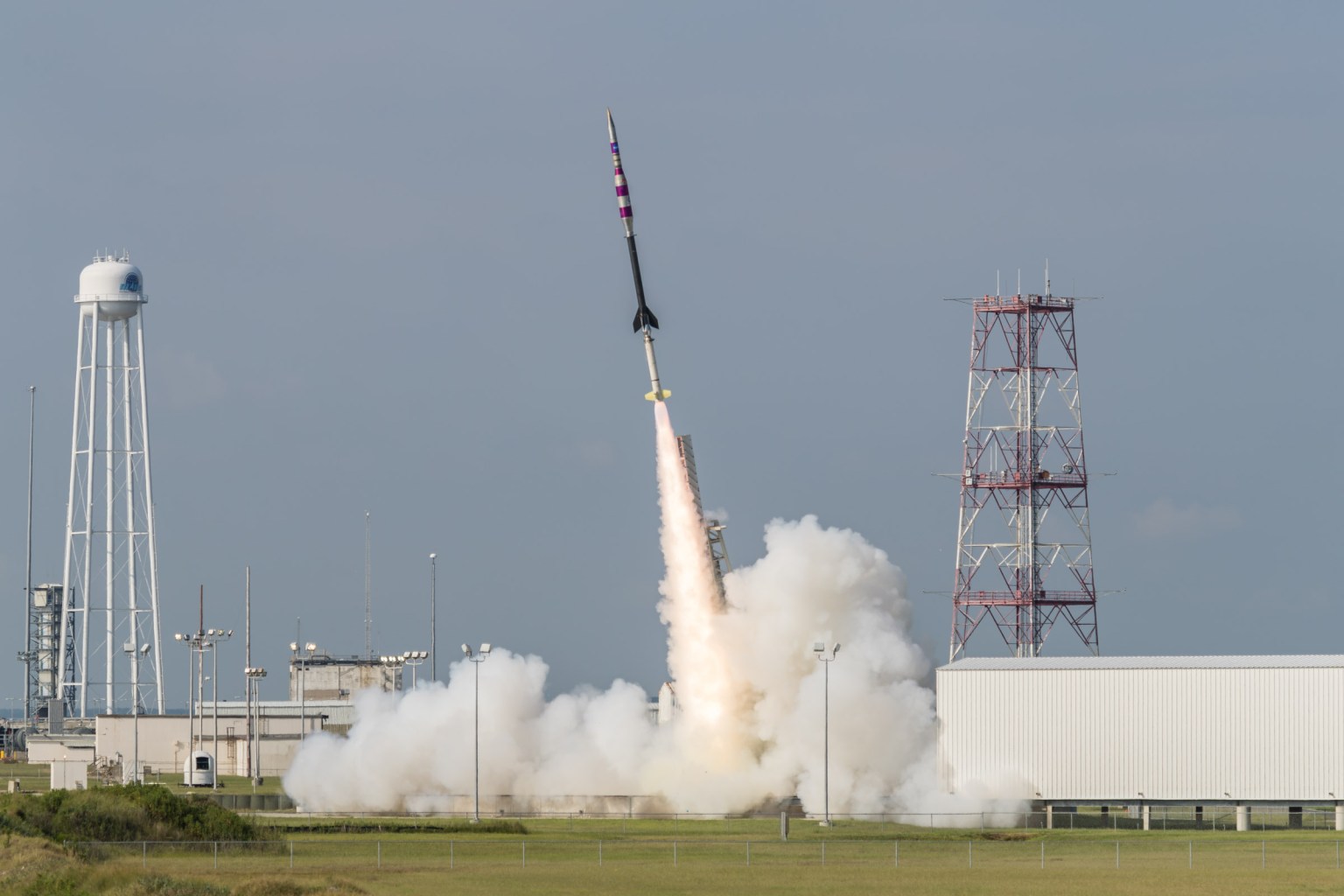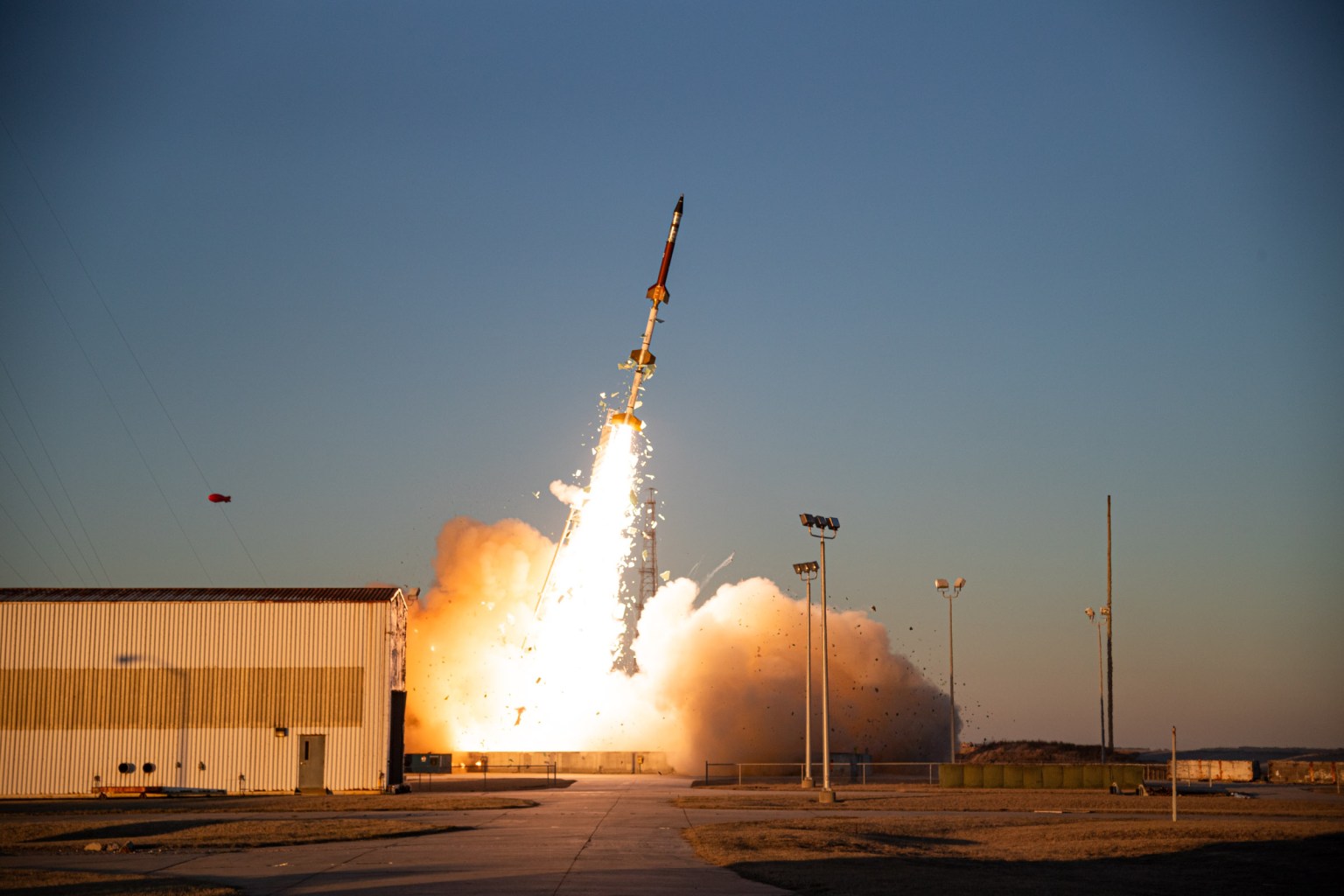LAUNCH UPDATE (2 p.m., Aug. 11):
The launch of the RockSat-X student project on a NASA Terrier Improved Malemute sounding rocket from NASA’s Wallops Flight Facility has been postponed to Sunday, Aug. 13, because of expected unacceptable weather in the area on the intended launch date of Saturday, Aug. 12. Launch on Sunday Aug. 13 is scheduled between 5:30 and 9:30 a.m.
The NASA Visitor Center will open at 4:30 a.m. on launch day for viewing the mission. Live coverage is available on the Wallops Ustream site beginning at 5 a.m. and Facebook Live coverage begins at 5:15.
It starts with an idea.
How to assess vegetation health on Earth from space observations? Develop a small re-entry spacecraft. Create an autonomous robotic arm for activities in space. Capture and measure high energy particles in space. The ideas are limitless.
In addition to attending classes, labs and studying, university and community college students then put in long hours to turn that idea into a reality. The goal, build an instrument or experiment for spaceflight that will test the idea.
Students from 15 diverse institutions across the United States will get an opportunity to fly their instruments and experiments on a NASA two-stage Terrier-Improved Malemute suborbital sounding rocket Aug.12, 2017, from the Wallops Flight Facility in Virginia.
The launch of the 44-foot tall rocket is scheduled between 5:30 and 9:30 a.m. EDT. The backup launch dates are August 13 and 14.
After flying to around 91miles altitude, the payload, with the experiments, will descend by parachute and is expected to land 15 minutes after launch in the Atlantic Ocean, about 64 miles off the Virginia coast. The experiments and any stored data will be provided to the students later in the day following sea recovery of the payload.
The NASA Visitor Center at Wallops will open at 4:30 a.m. on launch day for viewing the flight. The rocket launch is expected to be only seen from the Eastern Shore of Virginia and Maryland.
Live coverage of the mission is scheduled to begin at 5 a.m. on the Wallops Ustream site. Launch updates also are available via the Wallops Facebook and Twitter sites. Facebook Live coverage begins at 5:15 a.m.
Smartphone users can download the “What’s Up at Wallops” app, which contains information on the launch as well as a compass showing the precise direction for launch viewing.
The experiments are being flown through the RockSat-X program in conjunction with the Colorado Space Grant Consortium. RockSat-X is the most advance of NASA’s three-phase sounding rocket program for students. The RockOn launches are at the entry level, then progress to the intermedia level RockSat-C missions and then RockSat-X.
Participating institutions in this flight are the University of Colorado, Boulder; the University of Puerto Rico; Virginia Tech, Blacksburg; University of Kentucky, Lexington; Capitol Technology University, Laurel, Maryland; University of Maryland, College Park; Oregon State University, Corvallis; and University of Hawai’i Community Colleges at the Honolulu, Kaua’i, and Windward campuses.
Additional participants include a collaboration of West Virginia institutions consisting of West Virginia University, Morgantown; Marshall University, Huntington; West Virginia State University, Institute; West Virginia Tech, Beckley; Fairmont State; and NASA’s IV & V Facility in Fairmont.
Phil Eberspeaker, chief of the Sounding Rocket Program Office at Wallops, said, “The RockSat-X program provides an opportunity for undergraduate students to expand the knowledge gained in the classroom through conceptualizing, designing and building experiments and instruments for spaceflight. The students are able to apply the skills sought by their future employers in science, technology, math and engineering fields.”
RockSat-X is part of a three-tier program that introduces secondary institution students to building experiments for space flight and requires them to expand their skills to develop and build more complex projects as they progress through the programs. RockSat-X experiments are flown approximately 20 miles higher in altitude than those in the RockOn and RockSat-C programs, providing more flight time in space.
“This will be the seventh flight for RockSat-X and has provided the opportunity for hundreds of undergraduate students to design and build spaceflight projects. “said Chris Koehler, director of the Colorado Space Grant Consortium. “RockSat-C just completed its ninth flight in June. Through the RockSat programs, students from 53 higher education institutions, have been able to participate in a spaceflight project. This experience is invaluable for a student.”
The experiments being flown on this RockSat-X flight are:
University of Hawaii Community Colleges
Four community colleges in Hawaii have teamed up to encourage students to explore STEM-based careers. The experiment’s purpose is to demonstrate proof of concept for multiple experiments. The primary experiment is to eject a naphthalene sublimation rocket and capture imaging of this deployment. The secondary experiments onboard will evaluate a 9-axis IMU motion tracking device and take distance data of the sublimation rocket using an infrared rangefinder.
Capitol Technology University and the University of Maryland
This experiment comprises two experiments from two different universities. CTU is using this RockSat-X mission as a proof of concept for a 1U CubeSat. Their experiment is to demonstrate the functionality of Iridium 9603 SBD and will record video during flight using a VR camera. The University of Maryland’s portion of the experiment will collect experimental data to validate computational tribocharging models of grain interactions.
Oregon State University
This experiment is a proof of concept for an autonomous robotic arm. Their arm will deploy and make contact with predetermined targets around the payload in microgravity conditions. They will also record video of this function. The team hopes that this can demonstrate ability for robotic arms to create assemblies, autonomous repairs, and preforming experiments in space.
Virginia Tech
The Virginia Tech team is demonstrating the compatibility of software defined radio on different communication frequencies. The experiment will receive ADS-B and AIS transmissions from aircraft and boats to show that is a more flexible and efficient system than radar tracking. The team will also transmit the received data to a mobile ground station at the launch site as well as a ground station located at their campus in Blacksburg.
West Virginia Collaboration
There are five different individual experiments from this team. One experiment captures near-infrared and long-wave infrared imaging of Earth’s surface to distinguish landmass and potentially work as a vegetation health assessment. The second experiment is a re-entry probe that will deploy and transmit acceleration, temperature, and rotation data back to the main experiment sections. The third experiment detects ionized particles. The fourth experiment detects high energy particles and observe space effects on DNA, and it will also be studying ozone during re-entry. The fifth experiment tests an autonomous pointing determination and target acquisition system.
University of Kentucky
This team’s experiment is to increase the technology readiness level of a small entry spacecraft by demonstrating data acquisition, communication, and thermal protection system designs. Their experiment deploys a re-entry capsule to record and transmit temperature data in order to test the thermal protection system on the re-entry probe. The experiment also tests and verifies their deployment method and release mechanism in the space environment. The team will record video of the deployment to verify this aspect.
University of Colorado Boulder
The University of Colorado Boulder Rapid EXpandable Boom or REX-B team’s mission is to characterize the deployment of a slit-tube, strain energy deployment boom in a microgravity environment. The mission will collect data on the temperature and humidity conditions of the boom prior to its deployment as well as acceleration, pressure, and temperature data throughout the flight. The team will also take two high resolution videos using two GoPros and various low-resolution pictures at various points during the flight. The team’s goal is to collect useful data for their industry partner to help them in the development of future deployable booms for future space applications.
University of Puerto Rico
The experiment will allow the detection of high density particles found within 80-100 miles (130-165 kilometers) above Earth’s sea level, in order to study their physical and chemical properties. To meet this objective, the team will use UPR’s early micrometeorite impact detection system, collector, and various other measuring devices. This project could aid in developing a clearer image of space particles, and potentially lead to the discovery and subsequent genome sequencing of organic materials found within the aforementioned particles. This year, the UPR experiment focuses on cross-contamination mitigation through the use of plasma gas decontamination. They will also sequence any nucleic acids found in the collected micrometeorites.
NASA’s Sounding Rocket Program is conducted at the agency’s Wallops Flight Facility, which is managed by NASA’s Goddard Space Flight Center in Greenbelt, Maryland. Orbital ATK provides mission planning, engineering services and field operations through the NASA Sounding Rocket Operations Contract. NASA’s Heliophysics Division manages the sounding-rocket program for the agency.
Keith Koehler
NASA Wallops Flight Facility, Virginia
keith.a.koehler@nasa.gov
Image Caption: Experiment checks are conducted during pre-integration in June 2017. Photo Credit: NASA/Berit Bland




























